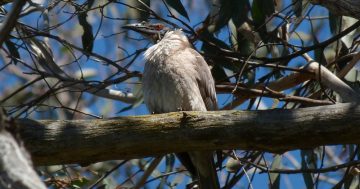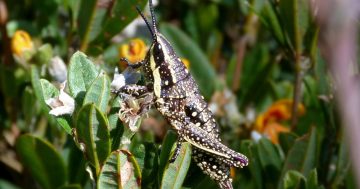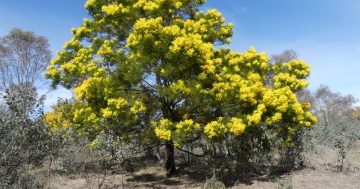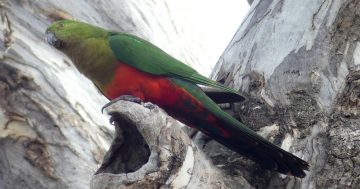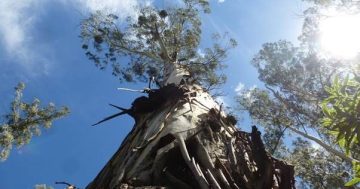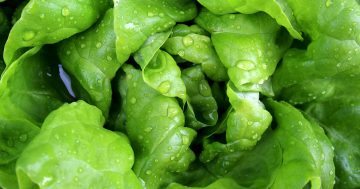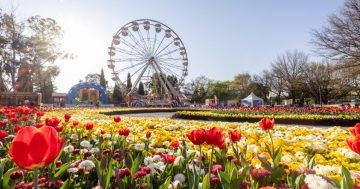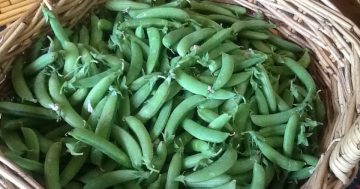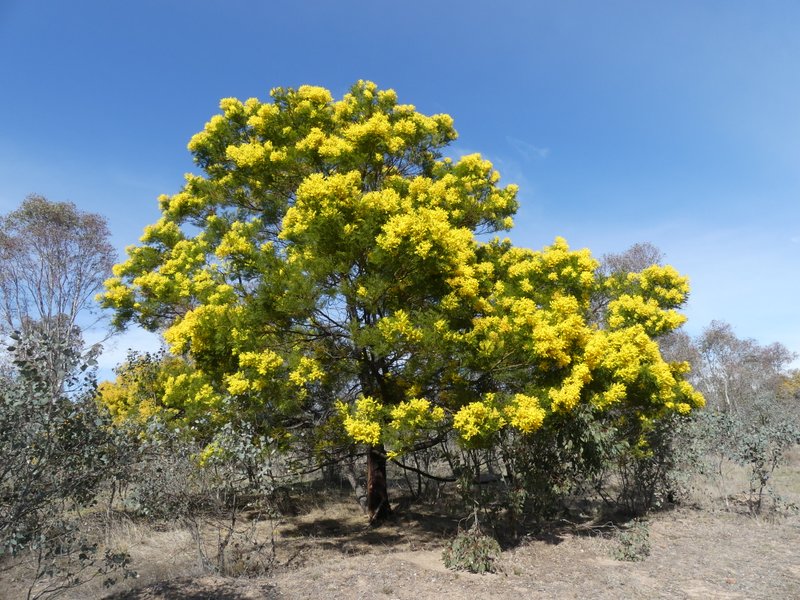
Early Black Wattle in full golden bloom against its dark green foliage. Photo: Ian Fraser.
I’m always looking towards the wattles when I’m deciding what to write about for my September column, and this year, it has been an especially golden late winter around Canberra.
The Cootamundra Wattles seemed to start blooming particularly early this year, and though that might always be more a matter of faulty memory in my case, it’s something that’s happening all over the world these days. I wrote about them in a column last August, but this time I want to introduce a few local species that flower in September.
It’s a fact that on any day of the year, there’s a wattle flowering somewhere in Australia. It’s not so surprising when you consider that there are almost 1000 species across the continent and in every climate zone. In fact, Acacia is the largest plant genus in Australia. Even in the ACT, a tiny proportion of the country, there are 23 native wattle species, and you can find one or more of them in flower virtually every month, though you might be struggling a bit in April.
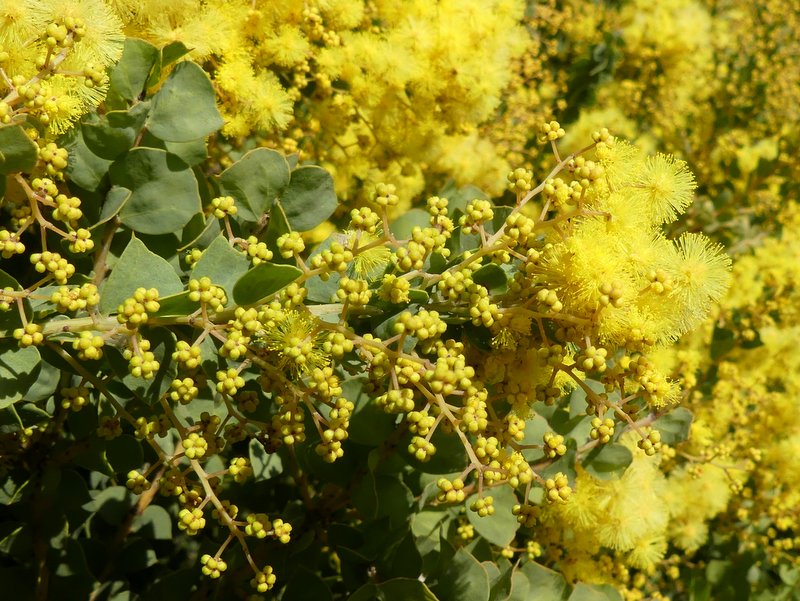
Wedge-leaved Wattle is easily recognised by its triangular foliage. Photo: Ian Fraser.
Elsewhere in the world, there are another 350 or so species of Acacia, or very close relations, in Africa (where the flat-topped Umbrella Thorntrees must have featured in at least 10,000 wildlife documentaries and YouTube videos), in southern Asia, South and Central America, and New Guinea and nearby islands. All of these non-Australian species have divided feathery leaves, but while many Australian species have these too, many more have evolved tough, leathery, leaf-like flattened leaf stems called phyllodes to reduce water loss. This is also a big help to us in trying to identify the Wattle in front of us.
There are, as I’ve suggested, many local wattles flowering right now, but I have selected just five species that flower in and around Canberra in September that you might have seen and wondered about.
The Cootamundra Wattle, though widely grown in Canberra and well-established in bushland, is not native to here, and its flowering is coming to an end – and as I mentioned, I devoted a whole column to it last August.
Here, then, are my selected five.
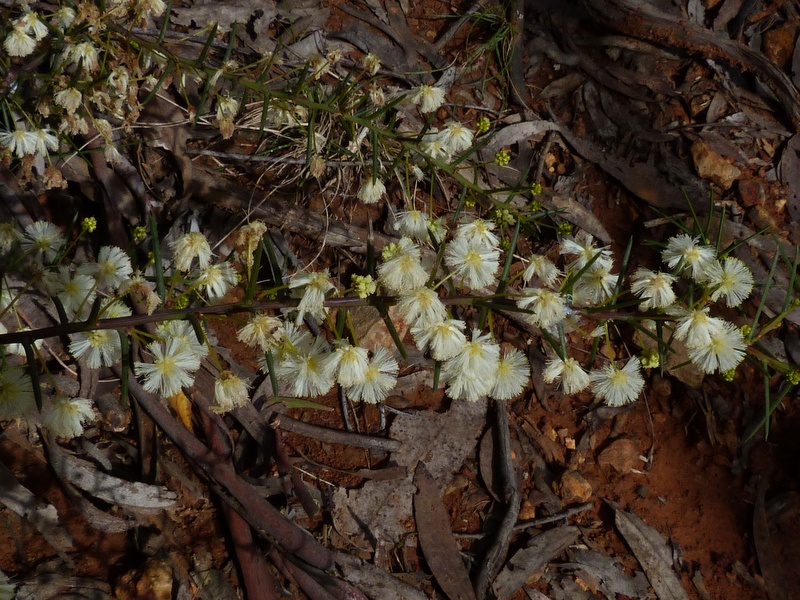
Gorse-leaved Wattle has almost white flowers which appear through winter. Photo: Ian Fraser.
Early, or Gorse-leaved Wattle Acacia genistifolia, is very conspicuous as it is one of the few local plants to flower right through winter, and its very pale, almost white flowers really stand out in the sombre winter bushland. The edges of Gungahlin Drive, where it passes through the Black Mountain reserve, are brightened by it. The ‘gorse-leaved’ refers to the stiff spiky-tipped phyllodes that presumably discourage animals that browse on leaves.
Oven’s or Wedge-leaved Wattle Acacia pravissima grows widely around Canberra and in ranges right up to the Snow Gums, and flowers profusely (in fact, while typing this, I glanced out the window and noticed that our very tall one has burst into flower since I last looked!) It can form dense thickets, as it does along sections of the road through Namadgi National Park south of Canberra. The little triangular phyllodes are quite unmistakable.
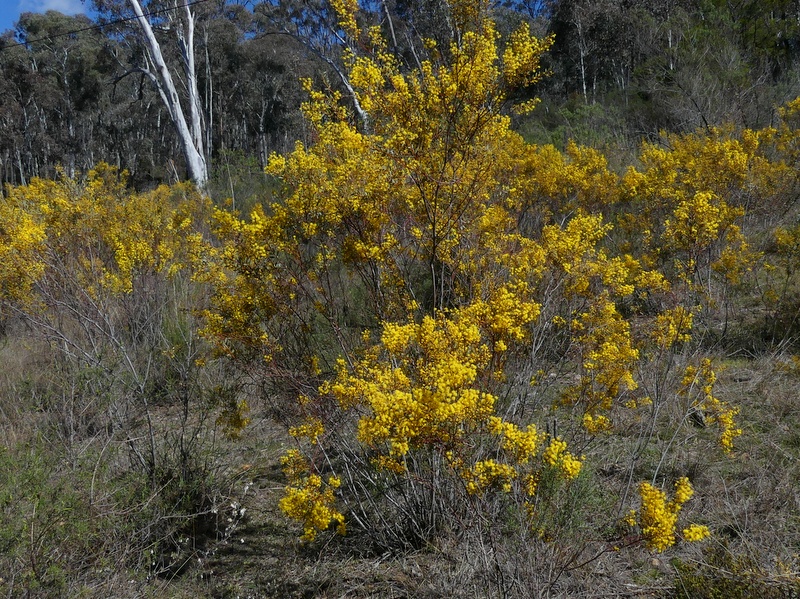
Box-leaved Wattle has small phyllodes and bright yellow flowers in early spring. Photo: Ian Fraser.
Box-leaved Wattle Acacia buxifolia is another early-flowerer that has been out for a while now.
It has small elliptical phyllodes on reddish stems, which are often quite erect. While these phyllodes are often sparse, the flowering can be quite dense. It usually grows on rocky slopes (Black Mountain is a good place to see it) around Canberra and low in the ranges. The ‘box’ part of the name has nothing to do with containers but refers to the European Box Tree, which the Romans called buxus, later becoming ‘box’ in English.
My other two featured wattles have feathery, divided true leaves.
Silver Wattle Acacia dealbata can be readily confused with Cootamundra Wattle, having similar silver-grey foliage, but while Silver Wattle has 10 to 20 feathery divided leaves per stem, Cootamundra Wattle has only two or three. (This isn’t very precise terminology, but you’ll see what I mean in the photo below.) While they mostly grow as shrubs or small trees around here, in Tasmania they can grow so large that furniture can be made from them.
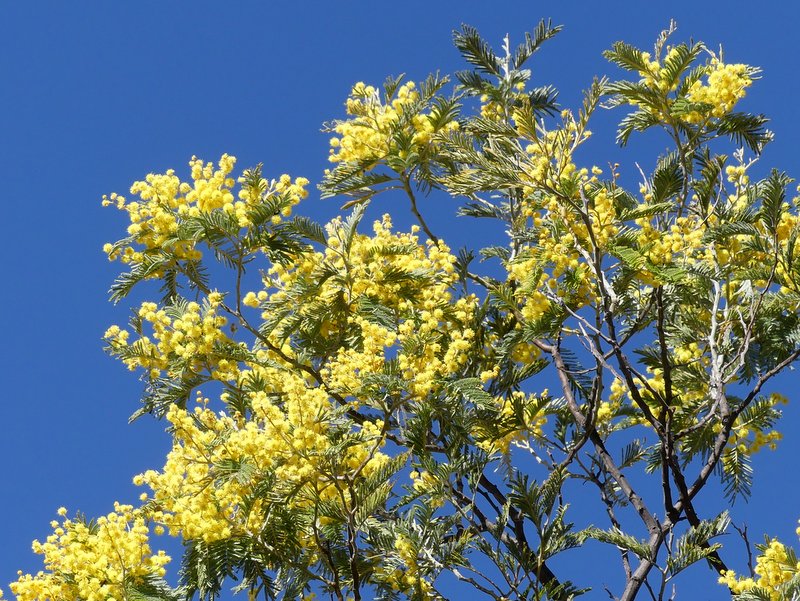
Silver Wattle with its distinct silver-grey foliage and clear yellow flowers. Photo: Ian Fraser.
Early Black Wattle Acacia decurrens has similar foliage again, but is bright green. It grows as a small tree and is common on Canberra roadsides and in reserves. It is not clear if it’s actually native to the ACT, but it grows naturally nearby and I’m giving it the benefit of the doubt for this purpose.
Happy spring!
Original Article published by Ian Fraser on Riotact.



